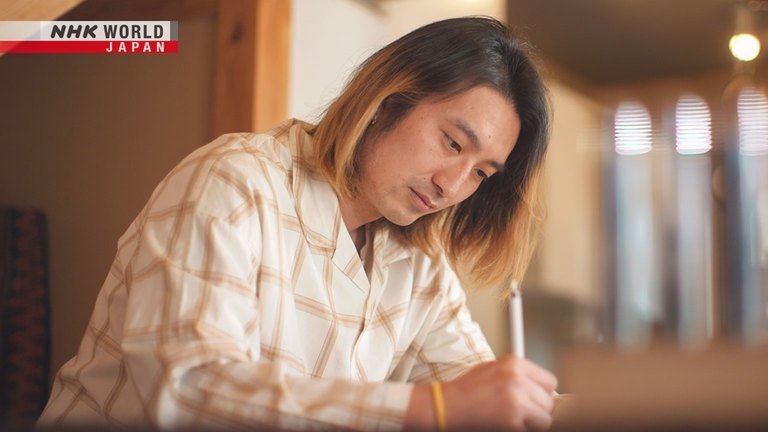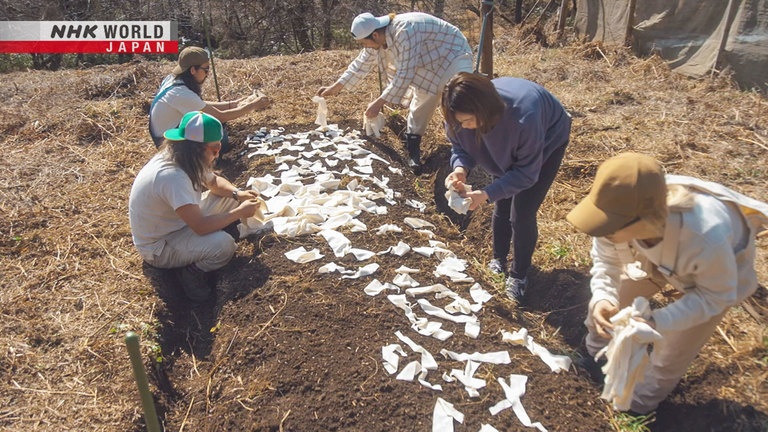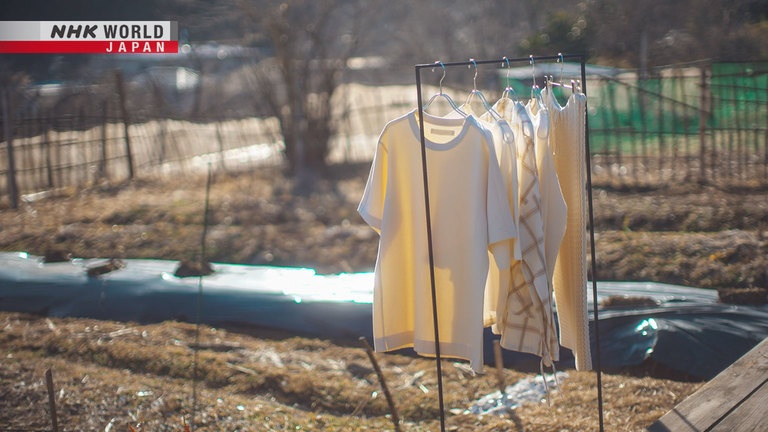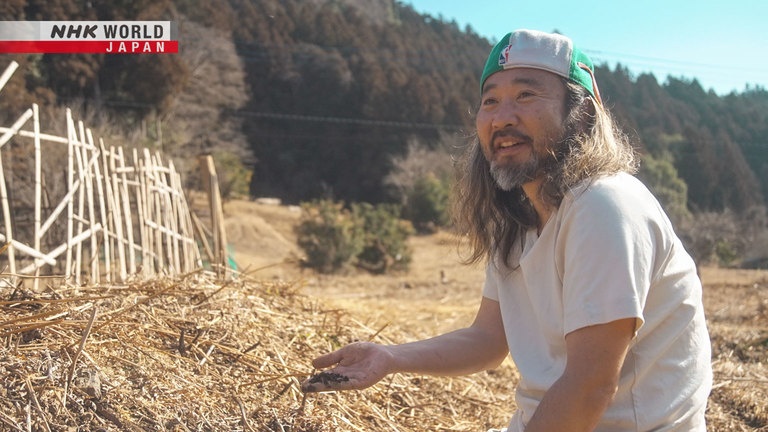Clothes to the Earth
Fashion designer Sawayanagi Naoshi uses only all-natural materials to make clothing that can be safely decomposed by microorganisms in the soil. His partner Hirota Takuya, who studied agriculture helped develop the ideal soil. Their brand is also unique because clothing is rented, not sold, ensuring it's returned when the wearer is done with it. Seeing clothes from beginning to end as they return to the earth is the heart of the pair's astonishing endeavor to reshape the fashion business.




Transcript
Since ancient times, the Japanese have believed that a life force resides in all creations.
Valuing and caring for the things we use, a "Zero Waste Life."
Pointing the way to better living for a new era.
It's a resource, people made it, but it doesn't
belong to us, it came from the earth.
We used it, and this is the final result.
Return to the earth, as they say.
It goes back to the planet we live on.
Western Tokyo.
A quiet village far from the heart of the city.
Here, a field was recently cleared for planting.
It's the work of Sawayanagi Naoshi, the result of two years' hard work, they'll yield crops even in winter when the harvest season has passed.
It's almost a perfect cartoon carrot,
not like the ones in supermarkets.
But they're full of flavor, really delicious.
It's like digging for buried treasure.
Sawayanagi strives to recreate a natural ecosystem in his fields.
Using no chemical fertilizers, his method of growing vegetables is as hands-off as he can make it.
To make it all happen, he uses something rather unusual to enrich the soil.
You can see it here. Cloth I buried last time.
Worn out clothes and scraps from clothing production, only natural materials, buried in the ridges between furrows and returned to the soil.
The microorganisms eat them.
It's their food.
They break it down and
enrich the soil in the process.
In some ridges, this process is well advanced.
It's almost completely decomposed,
but there's just a bit still remaining.
It isn't wearing away so much as melting.
You see the cloth literally cease to be.
It's just like a burial.
For me, this process
has become a real obsession.
Sawayanagi, observing clothing at its end of life, is actually a fashion designer by trade.
Clothes making inevitably generates waste, scraps of fabric that have to be thrown away.
In an effort to return such waste to the soil, Sawayanagi has created his own brand.
Starting two years earlier, he's already released a number of original products.
The designs are refined yet simple.
All the material, from the thread used for stitching on down is 100% natural, so it won't harm the soil.
A stretchy skirt made of 100% cotton.
In place of synthetic elastic, it's beautifully woven like origami so it clings to the body's curves.
No chemical dyes are used, and it retains the original color of the natural fiber.
Some cotton is naturally brown or green.
We use this, weaving cloth
with thread of each color.
Like this plaid shirt.
Every Sunday is field work.
His friends come along to help out.
You've been working out!
Nice! It really shows!
I went to the gym yesterday. I'm sore!
Hirota Takuya, Sawayanagi's business partner, is in charge of work on the field.
My work isn't particularly fashion-oriented.
To create the ideal soil for breaking down cloth, Hirota studied soil microbiota.
Soil is a living thing.
This 10g probably contains around
8.7 million different types of microbes.
You could spend the whole day
just examining it with a microscope.
The microbes needed to breakdown clothing can actually be seen with the naked eye.
The white patches on the inside of this bamboo are a type of organism called filamentous fungus.
These little guys break down
the cellulose in plant fibers.
In the soil's ecosystem
they fill the role of a decomposer.
Winter is the time to enrich the soil.
Today, they'll build up new ridges in preparation for spring.
It feels incredible!
Touching the soil like this,
I just want to say, "Earth!"
Don't get carried away!
Earth!
Thank you!
But it's a good thing you know.
It is. It really is.
They cover the raised earth in scraps of clothing.
All told, about 5 kilograms' worth.
It's like my alter ego, what I design,
it's full of my intentions.
It still feels like a bit of a waste.
I feel a little sorry returning it to the soil.
The fungus-laden bamboo is placed on the freshly turned soil.
Then, a layer of straw, food for the microorganisms.
Finally, a cover to prevent everything from blowing away.
Making clothes and returning them to the soil, such a project is almost unheard of.
And it had its beginnings in the discomfort felt by Sawayanagi in his place in the fashion industry.
While attending fashion college, at the age of 20, Sawayanagi made his debut as a designer.
Building name recognition at fashion shows and getting work from various brands, he was faced with the stark reality of mass-produced fashion.
Throw away half, put out a new one,
and repeat.
I was totally shocked.
It was then that he met Hirota through a mutual friend.
Hirota was general manager of the Japanese office for an overseas firm.
When Sawayanagi asked him for business advice, he discovered the shocking truth behind the fashion business.
It really was a shock. Truly awful.
The fashion business isn't all glamour.
They set out to create products outside the fashion cycle, hitting upon the idea of clothes that return to the earth.
It was the culmination of all the
experiences in my 20s.
It was a massive shift getting here.
Sawayanagi reexamined fabric for clothing from the perspective of decomposition in soil.
Hirota quit his job.
And using his experience studying agriculture at university, began to reexamine the life cycle of soil microbiota.
Through this, they developed their line of clothing that returns to the soil.
One person especially loves their brand.
Farmer Shimizu Chiharu.
The design is very stylish.
In farming you can use food waste,
returning it to the soil as fertilizer.
That's the kind of thing
I do in my own work.
It makes their clothing
even more attractive to me.
The clothes are actually long-term rentals, rented at below the sales price.
After being worn it's expected to be returned to Sawayanagi and Hirota's hands, ensuring that it will be returned to the soil.
Renting instead of buying clothes
is something unheard of.
It provides a sense of security
that its ultimate end is known.
Having just one item in your closet...
You can imagine what it'll become.
And even if you don't have our clothes,
just knowing about it changes everything.
Welcome to soil microbiology through clothes!